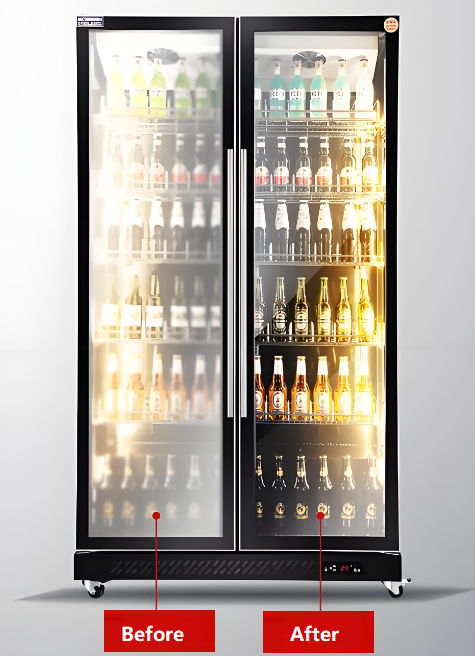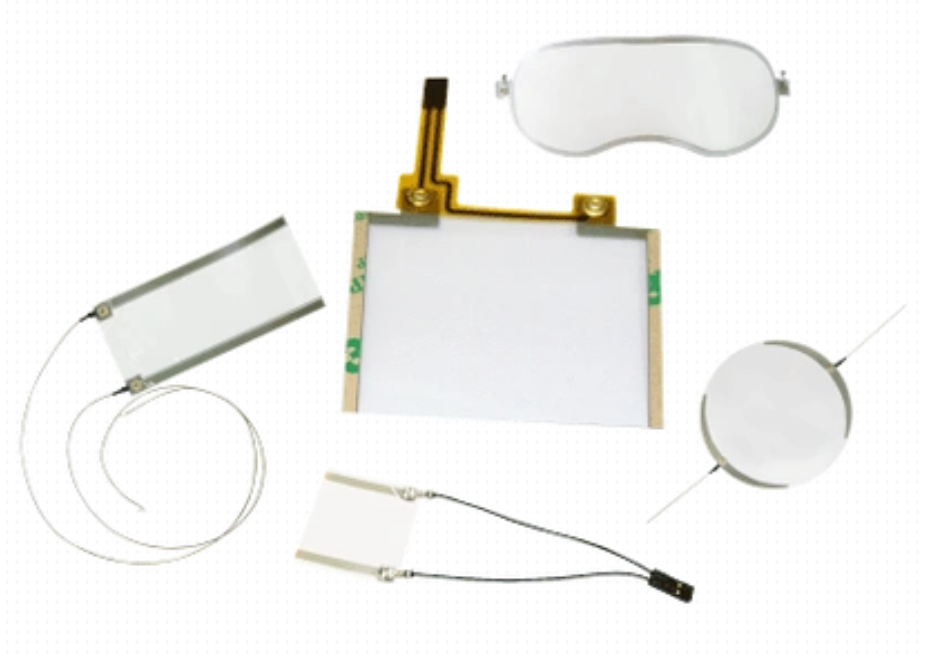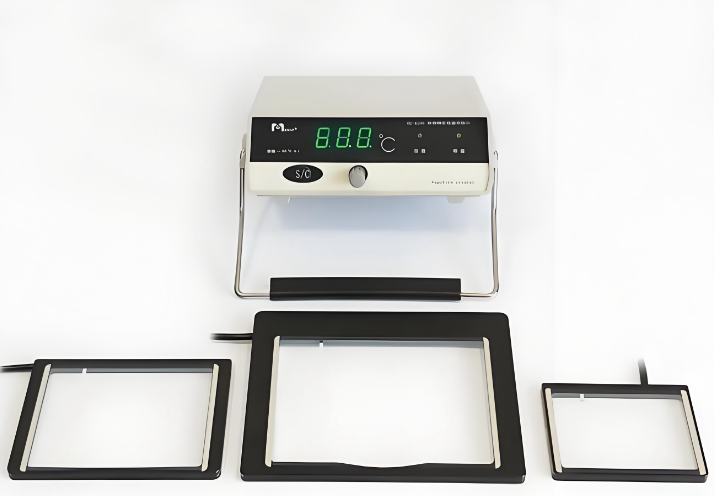Many store owners experience the same cycle every day: the freezer glass looks clear in the morning, but it starts to fog by noon and even forms frost during rush hours. Customers hesitate because they cannot see what is inside. Staff keep wiping the door, and the freezer ends up running harder than it should, which affects the overall shopping experience.
A transparent heating film offers a simple and reliable solution. By keeping the glass consistently warm at a controlled level, it prevents fog and frost from forming from the moment the freezer starts operating until the store closes.
Fog and frost form when warm, moisture-filled indoor air comes into contact with the much colder freezer glass. Each time the door opens, the temperature difference causes moisture in the air to condense instantly, especially when humidity is high around entrances or bakery areas.
Common situations include:
When the surface temperature of the glass falls below the dew point, condensation appears immediately and may freeze into frost in extremely cold conditions. Both outcomes lead to a loss of visibility and create an unappealing display.

When the freezer door becomes cloudy, customers cannot clearly see the products inside. This leads to subtle but meaningful changes in shopping behavior. Shoppers are less likely to choose items they cannot identify quickly, which results in reduced sales.
Fogged or frosted glass also brings added challenges:
Clear visibility is essential to both customer experience and store efficiency.
A transparent film heating element is a thin, clear heater applied to the inner surface of freezer display glass. Once powered, it generates mild, even heat that keeps the glass at a stable temperature.
The film is typically made using materials such as:
These materials allow electricity to pass through while remaining almost invisible to the eye. The heater maintains high clarity, so customers can view the items inside without distortion.
The secret lies in surface temperature control. By warming the glass slightly above the dew point, the heater stops moisture from condensing on the surface.
Here’s how it works:
Because the heat is so uniform, the entire display stays clear—from corner to corner—without creating hot spots or cold patches. Even during heavy customer traffic, the glass remains transparent.

Installation is simple when done with proper preparation. Most heaters are bonded directly to the inner surface of the glass using optical-grade adhesive or laminated during glass manufacturing.
General steps include:
For safety and performance, professional installation is recommended, especially for large freezer doors.
Here are common specifications for freezer and refrigerated display applications:
| Specification | Typical Value |
| Transparency | 85%–92% depending on material |
| Thickness | 0.1–0.25 mm |
| Voltage Options | 12V / 24V / 48V / custom |
| Power Density | 0.4–1.2 W/cm² |
| Defogging Time | 5–20 seconds |
| Operating Temperature | −30°C to +60°C |
| Material Options | ITO, silver mesh, nano-silver |
| Waterproof Rating | Up to IP65 with edge sealing |
| Custom Shapes | Rectangular, curved, round, or custom-cut panels |
Custom designs are often needed because freezer doors vary in size and layout.
Transparent heaters are widely used in:
Any equipment requiring clear visibility in a cold, humid space can benefit from a transparent heating film.

Danyu Electronics specializes in custom transparent heating films designed for defogging and anti-frost applications. We support freezer manufacturers, supermarket equipment builders, and cold-chain companies with heaters that perform reliably in challenging environments.
Our advantages include:
Whether your project requires prototypes or full-scale manufacturing, Danyu Electronics ensures consistency and dependable performance.
1. Will transparent heaters increase energy consumption?
Only slightly. The heater uses low power because it only warms the glass, not the whole freezer.
2. Do transparent heaters affect visibility?
No. They maintain high optical clarity and do not block product view.
3. Can the heater be installed on curved glass?
Yes. Flexible transparent films can be cut and shaped to match curved doors.
4. How long does installation take?
Small panels take minutes. Large freezer doors may require professional installation.
5. Are the heaters safe for food environments?
Yes. They are laminated and sealed, with materials suitable for cold-storage applications.
Simply drop your email or phone number in the contact form, and we'll promptly reply you shortly.